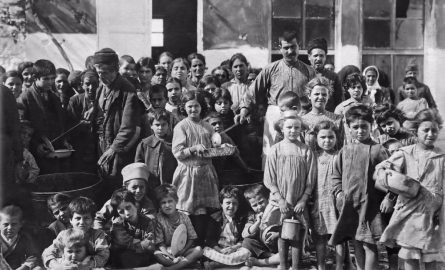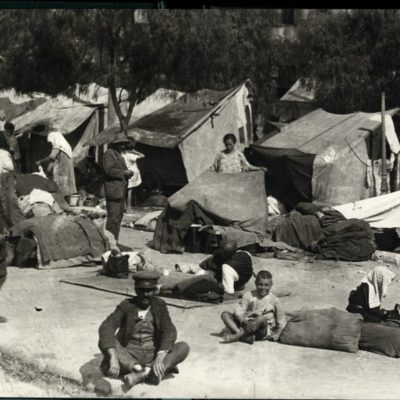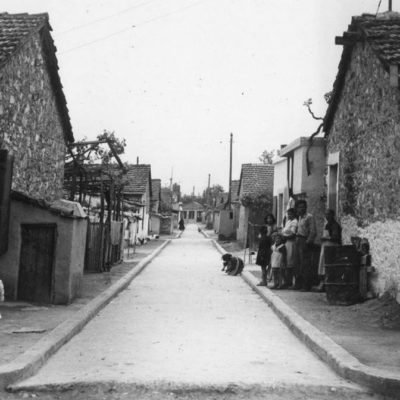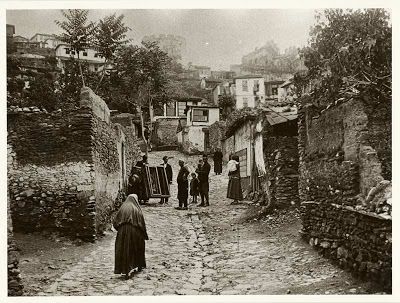
Chania
Viewing the city as a boisterous mosaic of multiple movements, encounters, arrivals and departures, the research project ‘100memories’ attempts to reconstruct fragments from the ‘biographies’ of four port cities. Our research aims to compose the cities’ biographies by selectively reconstructing the spaces, experiences, and transformations which shaped these port cities into places both distinct and distinctive, while at the same time firmly integrating them into a global history of movement.
Population movement, whether referring to arrivals or departures, has always been a fundamental element in Crete’s demographics. More specifically, the migrant mobility to and from the island that characterised Crete in the 20th century can be traced back to population flows which had begun as early as the Greek Revolution of 1821. Every revolutionary action that took place in Crete in the 19th century caused waves of refugees both internal, from rural to urban areas and vice-versa, and external, from the island to Greek or Ottoman territories. This mobility involved all three religious groups that lived on the island, Christians, Muslims, and Jews.
These population movements continued from the end of the Ottoman rule over the island in 1898 until the forced population exchange at the end of 1923. During this time, Cretan Muslims and Jews migrated from the island for political reasons, mainly due to the adverse conditions faced by non-Christian Orthodox residents. In addition, over that same period, populations from all three religious groups became economic migrants, as Christians, Muslims, and Jews left Crete for various destinations in search of a better life, usually never to return.
Therefore, the arrival in Crete of the Asia Minor refugees in 1922 was not a novelty for the island. What was extraordinary, however, was their massive numbers. The decision for a forced population exchange based on religion further complicated and problematised human movement. Christian refugees arrived in Chania and the rest of Crete in the thousands, while thousands of Musilms were forced to leave. Many people on both sides tried desperately to remain in or return to their respective homelands, but their efforts were in vain.
During the 1940s, population movements like the ones Crete had experienced earlier were curtailed. The occupation essentially involved controlling and restricting all movement, leading to resettlements becoming isolated incidents. However, what movements we do see over the 1940s contain the element of displacement. The most characteristic example was that, by 1945, Crete’s entire Jewish population had been displaced from the island by the occupying forces, with the ship they had been loaded on sinking in the middle of the Aegean in June 1944, killing almost every member of the Cretan Jewish community. Another group that was also forcefully displaced to concentration camps was resistance fighters. During the second half of the 1940s, it was the Greek state that took it upon itself to displace large numbers of dissidents to exile islands specially chosen for this purpose. At the end of the decade, there was also a wave of political refugees seeking refuge in countries of Eastern Europe, with many Cretans following this route.
A few years after the end of the Greek civil war, population movement resumed in its usual, pre-war pattern: large groups of people, mainly from rural but also from urban areas, deciding to move away from their place of origin in search of better financial conditions and an improved quality of life. From the mid-1950s and for about 20 years, a great number of Cretans migrated to Athens and abroad, to the USA, Canada, Australia, Germany, etc. Many of these people are still there today and their descendants are second- and third-generation migrants of Cretan origins, while others chose to reverse their migration and return after the fall of the military junta in 1974.
Since the end of the 1980s and the beginning of the 1990s, the island has been seeing more migrant arrivals than departures. A large number of people arrived in Crete after the gradual collapse of the Communist regimes in Eastern Europe. This movement did not necessarily become settlement, since many of these migrants eventually left the island, but the majority of the people who did stay were Albanian, followed by Russians, Ukrainians, Bulgarians, but also Georgians, Moldovans, Serbs, and others. Over the last decade, a large proportion of the people arriving at the island come from Iraq, Syria, Pakistan etc., with Crete following the same migration patterns emerging in the rest of the country.

Piraeus

Volos
